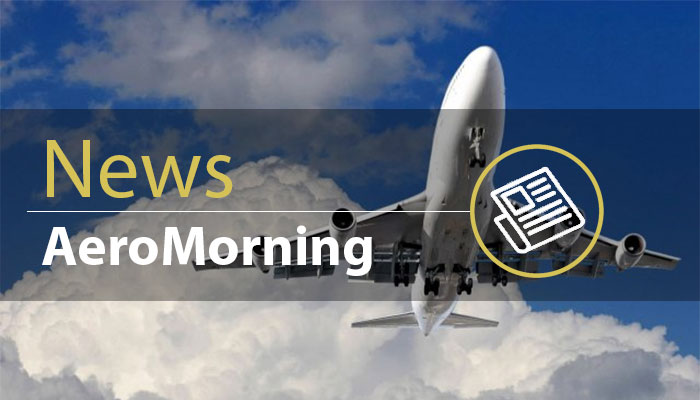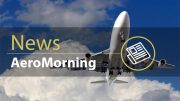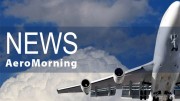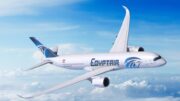Aircraft Seals Market worth $4.51 billion by 2030 – Exclusive Report by MarketsandMarkets™
DELRAY BEACH, Fla., Oct. 8, 2025 /PRNewswire/ — The aircraft seals market is projected to grow to USD 4.51 billion by 2030 from USD 3.68 billion in 2025, at a CAGR of 4.1% during the forecast period according to a new report by MarketsandMarkets™. The growth is mainly due to the rising expansion & aircraft fleet modernization, growth in the aircraft MRO sector, and material advancements in the sealing technologies. The global aircraft seals market is driven by factors such as the growing demand for fuel-efficient, lightweight aircraft, which drives the adoption of advanced seals, while rising air traffic, fleet modernization, and strict safety regulations push OEMs and aftermarket suppliers toward high-performance sealing solutions, ensuring reliability, durability, and compliance across global aviation applications.
Download PDF Brochure: https://www.marketsandmarkets.com/pdfdownloadNew.asp?id=95040283
Browse in-depth TOC on “ Aircraft Seals Market “
200 – Tables
80 – Figures
300 – Pages
Aircraft Seals Market Report Scope:
| Report Coverage | Details |
| Market Revenue in 2025 | $ 3.68 billion |
| Estimated Value by 2030 | $ 4.51 billion |
| Growth Rate | Poised to grow at a CAGR of 4.1% |
| Market Size Available for | 2020–2030 |
| Forecast Period | 2025–2030 |
| Forecast Units | Value (USD Million/Billion) |
| Report Coverage | Revenue Forecast, Competitive Landscape, Growth Factors, and Trends |
| Segments Covered | By Seal Type, Material, Application, Aircraft Type, End Use and Region |
| Geographies Covered | North America, Europe, Asia Pacific, and Rest of World |
| Key Market Challenge | Extreme operating conditions |
| Key Market Opportunities | Next-generation aircraft programs |
| Key Market Drivers | Fleet modernization & expansion |
Based on seal type, the dynamic seals segment is estimated to register the highest CAGR in the aircraft seals market during the forecast period.
Based on seal type, the dynamic seals segment is projected to register the highest CAGR in the aircraft seals market during the forecast period. A key technical driver of the global aircraft dynamic seals market is the increasing demand for high-performance sealing solutions in rotating and reciprocating applications, particularly within engines, landing gear, and hydraulic actuators. Dynamic seals in these systems are exposed to extreme operating conditions—high temperatures, fluctuating pressures, aggressive fluids like Skydrol, and continuous motion—that necessitate advanced material science and engineering design. The shift toward higher overall pressure ratios (OPR) in modern turbofan engines, for example, significantly elevates thermal and mechanical stress, creating a need for seals with superior wear resistance, low friction, and long service life under demanding cycles. To address these requirements, manufacturers are adopting advanced elastomers such as FKM and HNBR, spring-energized PTFE profiles, and fabric-reinforced composites that offer dimensional stability and resilience in harsh environments. Moreover, innovations in surface texturing, plasma coatings, and dry-film lubricants are extending seal durability by minimizing frictional losses and heat generation during continuous motion. As aircraft OEMs push for improved fuel efficiency and reliability, the technical imperative for durable, low-leakage, and high-precision dynamic seals becomes central, directly propelling growth in this market segment.
Based on material, the polymers segment is projected to account for the highest market share during the forecast period.
Based on material, the polymers segment is projected to dominate the aircraft seals industry share in 2025, due to the growing reliance on advanced polymers to deliver lightweight, chemically resistant, and temperature-tolerant sealing solutions across airframe and fluid systems. Aircraft fuel, hydraulic, and environmental control systems expose seals to aggressive fluids, wide temperature variations, and continuous pressure cycles. Polymers such as fluorocarbon (FKM), silicone, and HNBR offer superior resilience against swelling, low compression set, and compatibility with next-generation biofuels and synthetic lubricants. The adaptability of polymer compounds also enables precise tailoring of hardness, elongation, and permeability characteristics, ensuring seals perform consistently under demanding aerospace conditions.
Asia Pacific will likely account for the second-highest market share during the forecast period.
Asia Pacific is projected to account for the second-largest market share, primarily due to its rapidly expanding commercial aviation sector and strong defense modernization initiatives. Countries like China, India, and Japan drive high demand through large aircraft procurement programs and growing indigenous manufacturing capabilities. Rising passenger traffic across Southeast Asia further fuels new aircraft deliveries, increasing OEM demand for advanced seals in engines, fuel, and hydraulic systems. Additionally, the region’s expanding MRO infrastructure in hubs like Singapore and Malaysia accelerates aftermarket seal replacement, consolidating APAC’s strong market position and securing its rank as the second-largest segment globally.
SKF (Sweden), Parker Hannifin Corporation (US), Saint-Gobain (France), Trelleborg Sealing Solutions (Sweden), and Eaton (Ireland) are the major key players in the aircraft seals companies. These companies have strong distribution networks across regions like North America, Europe, Asia Pacific, the Middle East, Latin America, and Africa.
Source: MarketsandMarkets









Be the first to comment on "Aircraft Seals Market worth $4.51 billion by 2030"